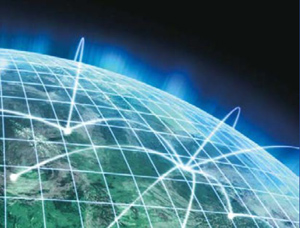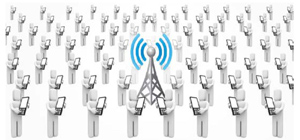
Disconnect Between U.S. Wireless Demand and Infrastructure Capacity
By:
- Rex Graham
Published Date
By:
- Rex Graham
Share This:
Article Content

The new report analyzes the traffic on our nation's wireless networks as it shifts away from a wired world and suggests how to prepare for a wireless future.
A new report from the Global Information Industry Center at the University of California, San Diego examines the projected disconnect between U.S. wireless infrastructure capacity and consumer demand. According to “Point of View: Wireless Point of Disconnect,” wireless use is growing rapidly and if present trends continue, demand will often outstrip capacity, causing congestion.
“We’re currently experiencing a mass migration from wired networks to wireless networks, which under the best of circumstances have far less capacity,” said Michael Kleeman, author of the report and senior fellow at UC San Diego. Wireless is much more convenient than wired connections for many purposes, but “we must understand and accept the trade-offs we will face for the convenience of accessing limited wireless capacity. Alternatively, as citizens we need to dramatically lower our expectations for wireless services in the future.”
Wireless data capacity is inherently different than fiber optic cables, which affects its performance. Among other differences, wireless is allocated a small portion of the available spectrum, and its signals are susceptible to interference from numerous sources, including weather and buildings. According to the report, even with advanced wireless technology, the capacity available to all network users in a given cell can be less than 1/000th the capacity of a fiber optic thread. Wireless demand is also mobile and hard to predict, and when it exceeds capacity the result is dropped connections and slow downloads.
The How Much Information? 2009 American Consumer Report found that in 2008, Americans consumed 3.6 zettabytes of data including nearly five hours of TV viewing per average day. This is more than 3.5 pettabytes per day, which exceeds the wireless data network’s entire 2010 throughput. Increasing use of mobile video will be a major source of growing demand for wireless capacity.

While there are many different types of cell sites, a typical cellphone site can handle about 120 iPad/iPhone users who are all simultaneously streaming video.
The 2011 “Wireless Point of Disconnect” report highlights three strategies for addressing this disconnect, all of which have drawbacks and tradeoffs. First, a key limiting factor is spectrum, and increasing and optimizing available spectrum are effective ways to increase network capacity. A combination of public and private strategies to optimize spectrum use should be employed and encouraged. However, many of the public solutions will take as much as a decade to implement. Second, carriers will increasingly need to manage traffic and develop triage and prioritization protocols, potentially including pricing-based mechanisms with real-time customer feedback to help manage network load. Third, the industry can invest in more infrastructure, including cell towers and “backhaul” cables. This will require community support.
“There is a lot of discussion about supply-demand issues for broadband Internet, but soon the same questions will be considerably more acute for wireless,” said Roger Bohn, director of the Global Information Industry Center at UC San Diego. “This report shows why future wireless systems will require adjustments, of one kind or another.”
The report is in the Center’s “Point of View” series, which are occasional overviews by noted experts. They address topical issues in technology, business, and public policy.
The report “Point of View: Wireless Point of Disconnect” is available online and can be downloaded in PDF format at http://giic.ucsd.edu/wireless_disconnect_2011_10_26.php
About the Author
Michael Kleeman is involved in several projects involving homeland security and critical infrastructure protection, including "Training and Exercises in California Homeland Security." He has also worked with the California Institute of Telecommunications and Internet Technology at UC San Diego on complex modeling, wireless technology applications, and complex visualization systems. Kleeman is a technology industry strategist whose particular skill is in bridging technical and business issues. For more than 30 years he has been involved in the technology industry in engineering, planning, management, and advisory roles. Formerly a vice president at the Boston Consulting Group, director at Arthur D. Little, and executive at Sprint, Kleeman has been involved with numerous technology companies in North America as advisor and executive. He has most recently served as the co-founder, vice president, and chief technical officer of Cometa Networks, a nationwide 802.11 firm. Kleeman serves as the national chair of Strategy for the American Red Cross and as science advisor for the University of California Center in Sacramento, and on the boards of Equal Access, a not-for-profit providing digital satellite radio services to developing nations and the Marine Mammal Center in Sausalito. He is also on the advisory council for the San Diego Technology Council. He holds an undergraduate degree from Syracuse University and an M.A. from the Claremont Graduate School.
Disclosure: The Global Information Industry Center (GIIC) supported this research. Past and present sponsors of GIIC include AT&T, Cisco Systems, IBM, Intel Corporation, LSI ,Oracle and Seagate Technology.
Share This:
You May Also Like
Stay in the Know
Keep up with all the latest from UC San Diego. Subscribe to the newsletter today.


